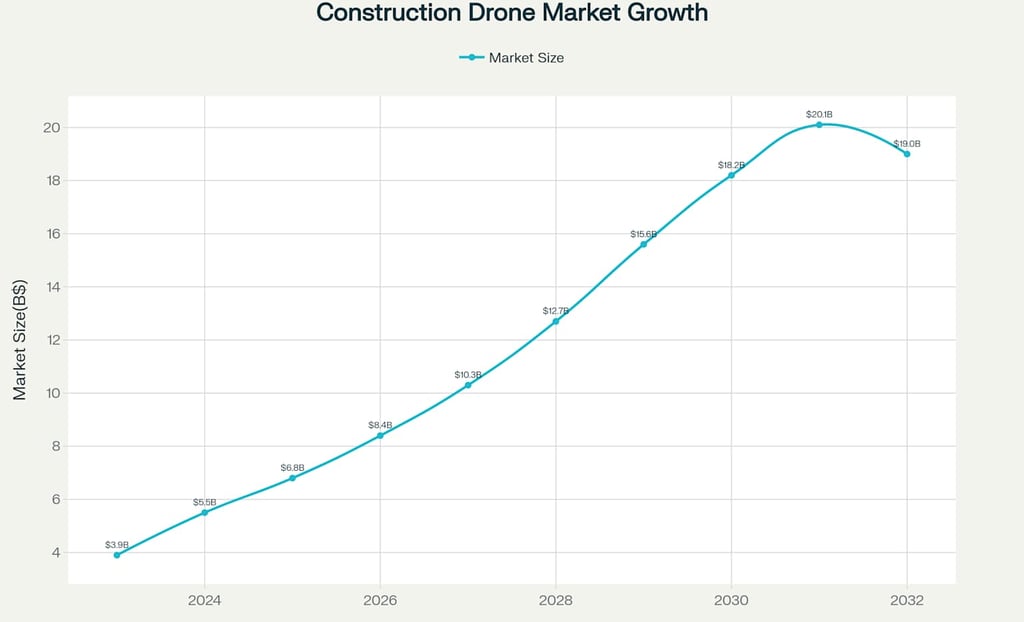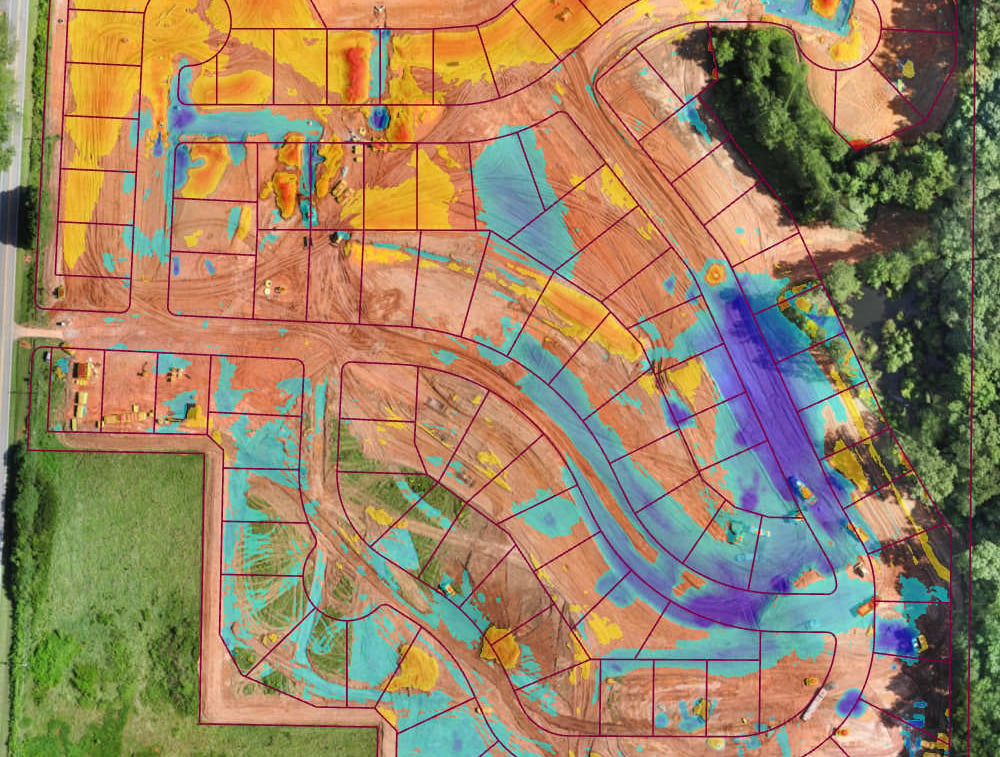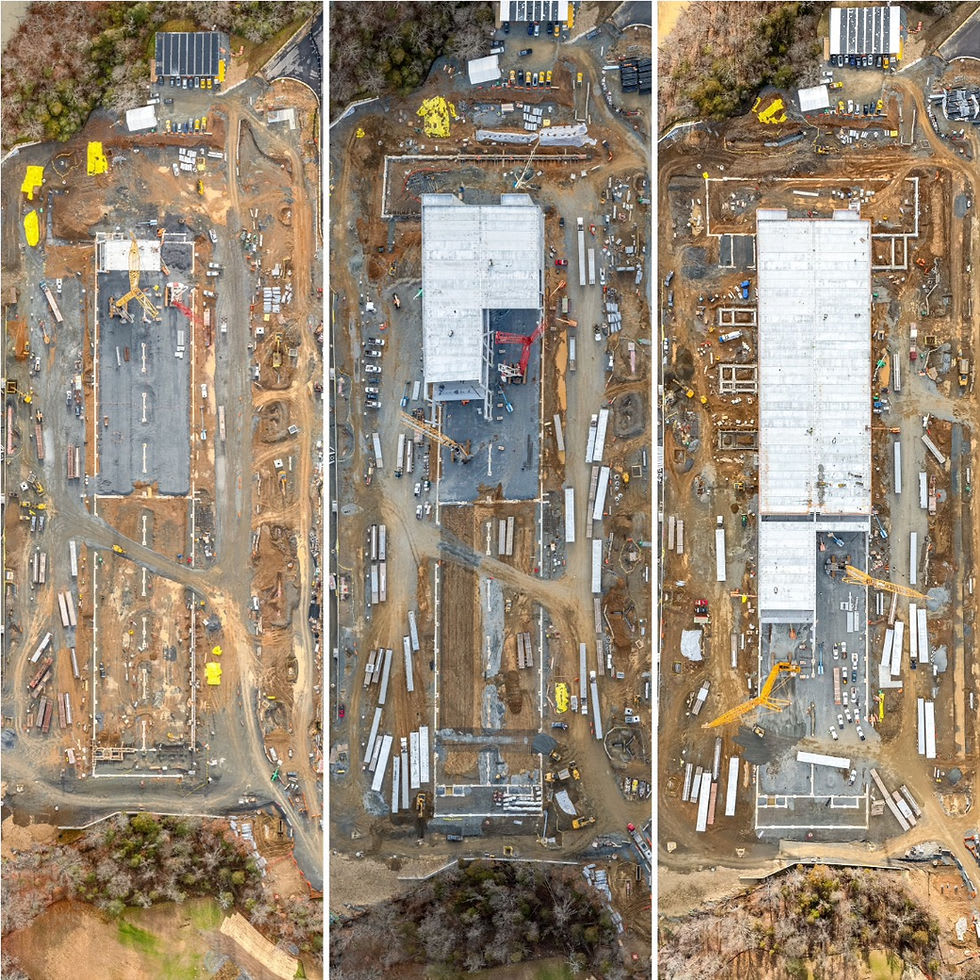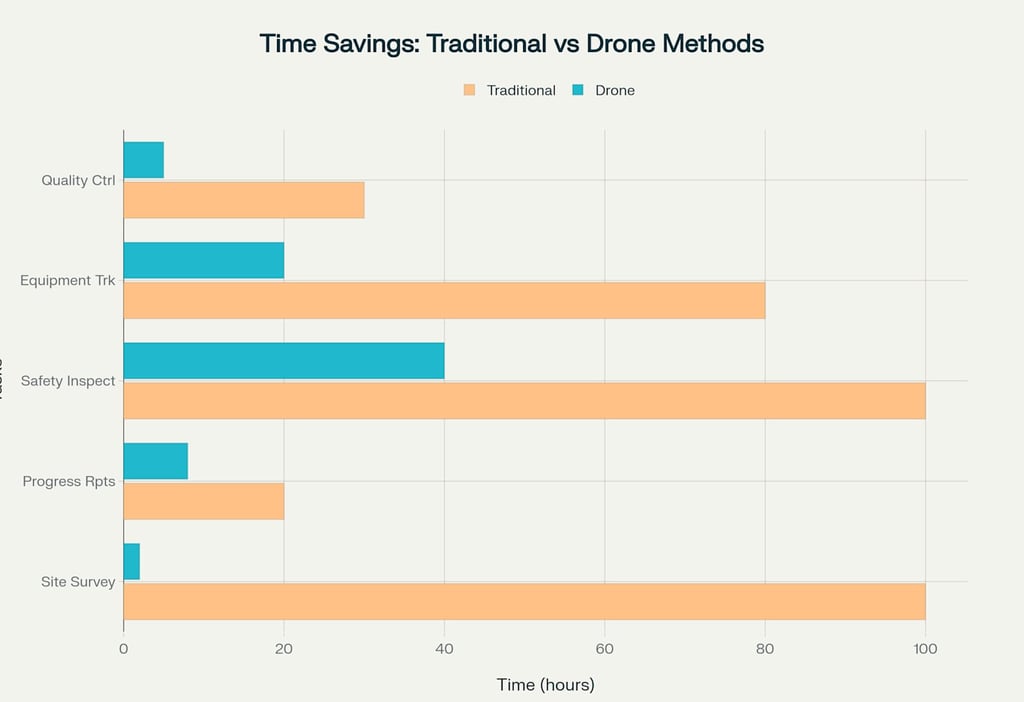
Revolutionizing Construction: The Game-Changing Benefits of Drone Technology
A deeper look at numbers and reasons for delays in construction industry and how drones can assist in reducing the risks of significant delays.
Orbit Aerials
3/3/20234 min read

The construction industry stands at the precipice of a technological revolution32. With global construction spending exceeding $8 trillion annually, yet plagued by chronic inefficiencies that see projects running 80% over budget and 20 months behind schedule, the industry desperately needs innovative solutions32. Enter drone technology—a transformative force that's reshaping how construction projects are planned, executed, and managed from start to finish.
The Explosive Growth of Construction Drone Technology
The construction drone market is experiencing unprecedented growth, reflecting the industry's recognition of this technology's transformative potential. According to multiple industry analyses, the global construction drone market has grown from $3.9 billion in 2023 to an estimated $5.05-7.0 billion in 2024. Market projections indicate this figure will reach between $15.51 billion and $21.8 billion by 2032, representing a compound annual growth rate (CAGR) of 12.4%
Substantial Growth of Demand for Drones in Construction Industry
This explosive growth is driven by increasing recognition among construction companies that drone technology delivers tangible returns on investment. Leading construction firms worldwide have reported ROI improvements ranging from 15-25% after implementing drone programs29. The technology's adoption rate in the construction sector has been increasing by more than 200% annually in recent years, making it one of the fastest-growing technological implementations in the industry.
Transforming Construction Core Operations
Traditional land surveying methods have long been a bottleneck in construction project timelines13. Ground-based surveying teams typically cover approximately five acres per hour using conventional techniques13. Drones equipped with high-resolution cameras and LiDAR sensors can survey up to 120 acres per hour—a remarkable 60-fold increase in efficiency. This dramatic improvement in surveying speed translates to substantial cost savings and faster project initiation. For large-scale projects, drone surveys can reduce surveying time from 100 hours to as little as 2 hours, eliminating the need for extensive on-foot reconnaissance. The precision of drone-captured data enables the creation of accurate 2D orthomosaic maps, 3D terrain models, and digital elevation models (DEMs) that serve as foundational elements for project planning and design.
The integration of photogrammetry and LiDAR technology has positioned drones as the preferred choice for topographic surveys, cadastral surveys, and engineering surveys. These detailed aerial surveys provide engineers and architects with comprehensive site information that informs better design decisions and reduces the likelihood of costly surprises during construction.
Progress Monitoring: Real Time Project Visibility
One of the most valuable applications of drone technology in construction is progress monitoring.
Regular aerial surveys provide project managers with comprehensive, up-to-date visuals of construction sites, enabling real-time tracking of project milestones and early identification of potential delays or deviations from planned schedules
Drone-based progress monitoring delivers several key advantages. Weekly aerial documentation captures project advancement through high-resolution imagery that can be compared side-by-side with previous surveys, providing clear visual evidence of progress rates. This capability enables as-built condition comparisons that identify discrepancies between planned designs and actual construction progress, allowing for prompt corrective actions.






Safety Inspections
Construction sites are inherently dangerous environments, with workers frequently exposed to height-related risks, unstable structures, and hazardous materials. According to the National Safety Council, 50% of construction workers report exposure to dangerous work environments where drones could potentially reduce injury risks.
Drones revolutionize safety inspections by accessing hazardous or hard-to-reach areas without endangering personnel. These aerial platforms can safely inspect scaffolding, high structures, and unstable areas while monitoring compliance with OSHA safety protocols. The real-time data collection capability of drones enables immediate identification of potential safety hazards, including gas leaks, structural weaknesses, and unsafe working conditions.
The enhanced safety oversight provided by drones extends beyond immediate hazard detection. Regular aerial surveillance ensures continuous adherence to safety protocols, helping prevent accidents before they occur. In emergency situations, drones provide real-time visuals that aid swift and safe emergency responses, potentially saving lives and minimizing incident impacts.


Quantifying Financial Benefits
Labor cost savings represent one of the most significant financial benefits of drone adoption. Drone surveys require fewer personnel and less time than traditional methods, directly reducing operational expenses. For large construction projects, these savings can be substantial—drone technology can reduce inspection times by 50-60% and overall labor costs by 20-30%.
The precision and accuracy of drone-collected data helps minimize costly rework by identifying potential issues early in the construction process. This proactive approach to quality control ensures projects adhere to design specifications and helps prevent budget overruns that result from late-stage corrections and modifications
Conclusion: Embracing the Future of Construction
The integration of drone technology into construction operations represents more than a technological upgrade—it's a fundamental shift toward more efficient, safer, and more profitable project delivery. With demonstrated benefits including 60-fold improvements in surveying efficiency, 50-60% reductions in inspection time, and 15-25% improvements in project ROI, construction drones have proven their value across diverse project types and scales.
As the global construction drone market continues its trajectory toward $19 billion by 2032, early adopters are positioning themselves for competitive advantages that extend far beyond immediate operational improvements. The technology's evolution toward AI-powered autonomous operations, seamless BIM integration, and IoT connectivity promises even greater benefits for construction firms willing to embrace innovation.
For construction companies considering drone implementation, the question is no longer whether to adopt this technology, but how quickly they can integrate it into their operations to capture the substantial benefits it offers. The construction industry's digital transformation is accelerating, and drone technology stands at the forefront of this evolution, ready to help companies build better, faster, and more safely than ever before.

Location
Burj Al Tujjar
Kuwait City, Kuwait
Hours
Sunday-Thursday 9:00-16:00
Contacts
+965 991 11 397
info@orbitaerials.com

